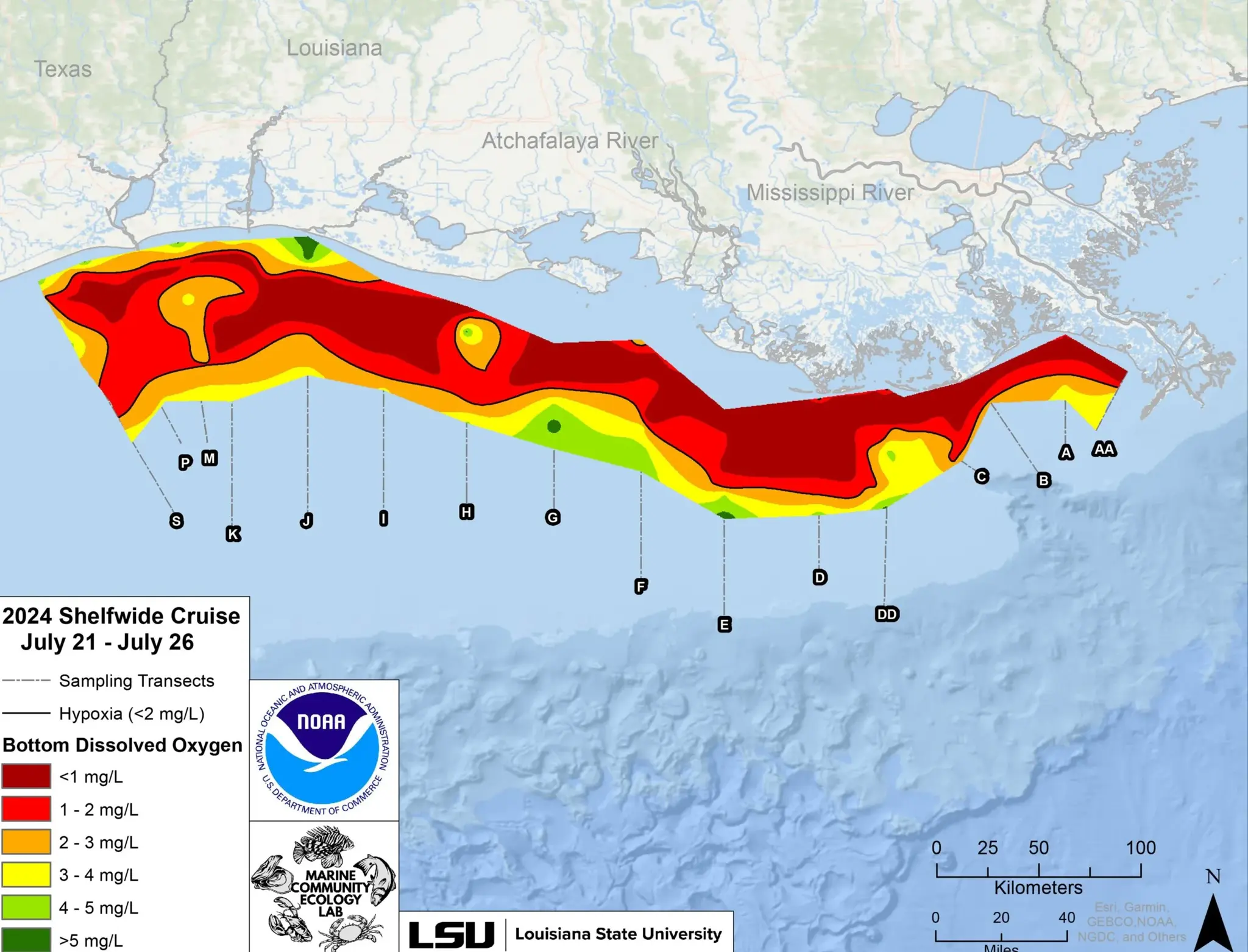This year’s area of low oxygen in the Gulf of Mexico is larger than average, the National Oceanic and Atmospheric Administration (NOAA) announced on Thursday.
The “dead zone” is approximately 6,705 square miles, as measured last week. Within NOAA’s 38 years of measuring the dead zone, this year’s assessment marks the 12th-largest area of low to no oxygen, which can kill fish and marine life.
NOAA had forecast at the beginning of the summer that the dead zone would be above average. But the measurement announced this week is even larger than anticipated.
Experts fault upriver conservation efforts that are not keeping pace.
[…]
The dead zone occurs every summer and is caused in large part by nutrient runoff from the overapplication of fertilizer on Midwestern farms. During rains or flooding, water carries the fertilizer’s nitrogen and phosphorus from fields into the Mississippi River and waterways that feed into the river.
When the nutrients reach the Gulf, either from the Mississippi or the Atchafalaya River, they ignite an overgrowth of algae. As the algae dies, it decomposes and sinks to the bottom, depleting oxygen from the water.
When oxygen levels fall in areas of water, animals like fish and shrimp will leave. Some commercially harvested species such as shrimp will concentrate around the edges of the affected area, forcing local fishermen to travel outside the dead zone to cast their nets. But bottom-dwelling creatures, such as clams and burrowing crabs, aren’t as mobile. They cannot leave the dead zone and will suffocate and die.
[…]
“After nearly four decades of experience with the Gulf dead zone, it should be clear that we can’t continue to rely on the same policy tools to manage fertilizer pollution and expect a different result,” wrote Karen Perry Stillerman, deputy director of the Food and Environment Program at the Union of Concerned Scientists.
Perry Stillerman emphasized the need to demand a new approach, “one that not only helps farmers to shift their practices but also insists that they do so,” she added.

Solid explanation but it lacks why decomposing algae deplete oxygen from the water
Essentially microbes facilitating decay use oxygen in the same way we do, though once they run out they slow down instead of dying

